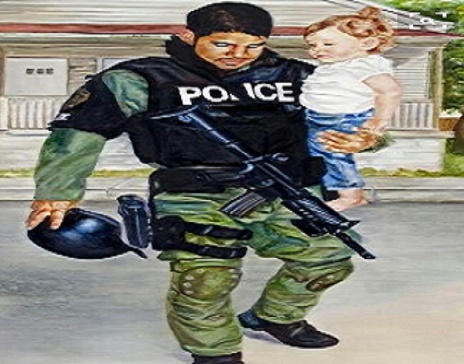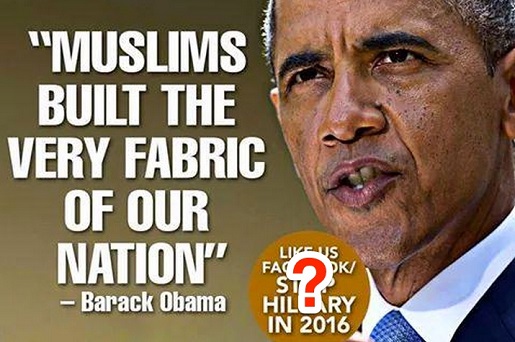EXCLUSIVE REPORT: Danger at US Border a Manufactured Crisis? Police Chiefs’ Study Describes Real Threat
 “In three states, the proximity of the road to the border allowed investigators to cross undetected, successfully simulating the cross-border movement of radioactive materials or other contraband into the United States from Canada.” – Chief of Police National Covert Operations Report
“In three states, the proximity of the road to the border allowed investigators to cross undetected, successfully simulating the cross-border movement of radioactive materials or other contraband into the United States from Canada.” – Chief of Police National Covert Operations Report
Following President Donald Trump’s Tuesday night address to the American people, the Democratic Party and their feckless, spineless and mendacious cohorts in the news media pulled out all the stops to destroy Trump and his supporters.
Their favorite talking point is: Donald Trump’s manufactured crisis at the U.S.-Mexico border. However, the truth of the matter is that both houses of the United States Congress already possess reports that spell out one danger no one seems to mention: Besides the invasion by crime gangs, drug traffickers, human traffickers, child-sex predators and other dangerous malefactors.
These dangerous migrants include Islamic terrorists and those who provide weapons and explosives to them, especially weapons of mass destruction
In the past, officials from the Government Accountability Office (GAO) testified before members of the U,S. Congress on at least three separate occasions in order to describe security vulnerabilities that terrorists could exploit to enter the country. Yet, even with reports of border security deficiencies, President Barack Obama played political games with the issue of Homeland Security.
According to a report by the Terrorism Committee of the National Association of Chiefs of Police (of which Conservative Base’s Jim Kouri chaired), the GAO focused on covert testing at ports of entry — the air, sea, and land locations –where international travelers can legally enter the United States.
 In its testimony, the GAO focused on limited security assessments of unmanned and unmonitored border areas between land ports of entry.
In its testimony, the GAO focused on limited security assessments of unmanned and unmonitored border areas between land ports of entry.
GAO officials were asked to summarize the results of covert testing and assessment work for testimonies. This report discusses the results of testing at land, sea, and air ports of entry; however, the majority of GAO’s work was focused on land ports of entry. The unmanned and unmonitored border areas GAO assessed were defined as locations where the government does not maintain a manned presence 24 hours per day, where there was no apparent monitoring equipment in place, and there is no solid barriers (walls, fences, gates, etc.).
“The government has conducted numerous vulnerability tests and they all appear to highlight the fact that our borders are porous not only to illegal aliens but also to terrorists, weapons of mass destruction and other contraband. Maybe the Democrats and the already compromised news media should worry more about that than about finding something… anything with which to impeach the Commander in Chief ,” said political strategist Mike Baker.
GAO investigators identified numerous border security vulnerabilities, both at ports of entry and at unmanned and unmonitored land border locations between the ports of entry. In testing ports of entry, undercover investigators carried counterfeit drivers’ licenses, birth certificates, employee identification cards, and other documents, presented themselves at ports of entry and sought admittance to the United States dozens of times.
They arrived in rental cars, on foot, by boat, and by airplane. They attempted to enter in four states on the northern border (Washington, New York, Michigan, and Idaho), three states on the southern border (California, Arizona, and Texas), and two other states requiring international air travel (Florida and Virginia).
In nearly every case, government inspectors accepted oral assertions and counterfeit identification provided by GAO undercover investigators as proof of U.S. citizenship and allowed them to enter the country. In total, undercover investigators made 42 crossings with a 93 percent success rate.
On several occasions, while entering by foot from Mexico and by boat from Canada, covert investigators were not even asked to show identification.

For example, at one border crossing in Texas, an undercover investigator attempted to show a Customs and Border Protection (CBP) officer his counterfeit driver’s license, but the officer said, “That’s fine, you can go” without looking at it.
As a result of these tests, GAO concluded that terrorists could use counterfeit identification to pass through most of the tested ports of entry with little chance of being detected.
In its most recent work, GAO shifted its focus from ports of entry and primarily performed limited security assessments of unmanned and unmonitored areas between ports of entry. The names of the states GAO visited for this limited security assessment have been withheld at the request of Customs and Border Protection officials.
In four states along the U.S.-Canada border, GAO covert investigators found state roads that were very close to the border that CBP did not appear to monitor. In three states, the proximity of the road to the border allowed investigators to cross undetected, successfully simulating the cross-border movement of radioactive materials or other contraband into the United States from Canada.
For example, in one apparently unmanned, unmonitored area on the northern border, the U.S. Border Patrol was alerted to GAO’s activities through the tip of an alert citizen. However, the responding U.S. Border Patrol agents were not able to locate the investigators and their simulated contraband.
Also on the northern border, GAO investigators located several ports of entry in one state on the northern border that had posted daytime hours and were unmanned overnight. Investigators observed that surveillance equipment was in operation, but that the only preventive measure to stop an individual from crossing the border into the United States was a barrier across the road that could be driven around. GAO officials also identified potential security vulnerabilities on federally managed lands adjacent to the U.S.-Mexico border.
GAO concluded that CBP faces significant challenges on the northern border, and that a determined cross-border violator would likely be able to bring radioactive materials or other contraband undetected into the United States by crossing the U.S.-Canada border at any of the assessed locations.
Does this report sound like a manufactured crisis?
First networks debated on whether or not to cover President Donald J. Trump’s first Oval Office address and now the mainstream media’s go-to talking point is that it’s is a “manufactured crisis” by the Trump administration. These are the facts—and unlike the mainstream media, we’ll let you decide what to do with them.


